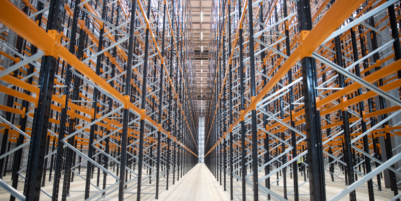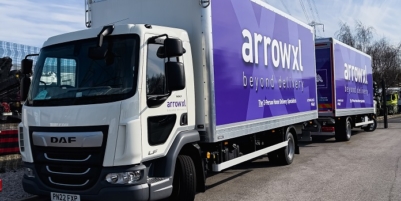-
ROSSLARE EUROPORT TARGETS HEALTH & SAFETY WITH CAMERA TELEMATICS PARTNERSHIP - 2 days ago
-
Landmark Study Reveals Wearable Robotics Significantly Boost Safety and Efficiency in Industrial Environments - July 24, 2024
-
Visku Tackle The Retail Seasonality Challenge One Pallet At A Time - July 22, 2024
-
KAMMAC AND BERGEN LOGISTICS STRENGTHEN FASHION & LIFESTYLE SERVICES IN THE UK - July 19, 2024
-
TENTBOX EXTENDS PARTNERSHIP WITH ARROWXL TO SUPPORT INCREASING DEMAND - July 17, 2024
-
The Perfume Shop improves customer journeys while driving profitability in partnership with Scurri - July 17, 2024
-
ZEROMISSION SECURES £2.3M ($3M) INVESTMENT TO ACCELERATE ELECTRIC FLEETS - July 16, 2024
-
BCMPA CELEBRATES SUCCESS OF 2024 CONFERENCE - July 15, 2024
-
Best of the Best: Jungheinrich Celebrates Triple International Award Win - July 12, 2024
-
GOPLASTICPALLETS.COM CALLS ON NEW CHANCELLOR RACHEL REEVES TO CONSIDER PLASTIC PACKAGING TAX REFORM - July 10, 2024
Author: Karl Lauri
The combination of globalisation, e-commerce and the Internet has blown apart the post-war ‘standard business model’, which saw large companies enjoying ever-greater economies of scale through mass production and mass marketing. They had the financial strength to invest in efficient manufacturing, and were able to convince the consumer that what they really wanted was whatever was most profitable for the manufacturer. Smaller companies with fewer resources were restricted to their local market or to a small selection of major wholesale or retail customers.

All that has changed. Mass promotion no longer works, as consumers gain their market knowledge from a myriad of streams, websites, and ‘social influencers’. They no longer want the same goods as their neighbours: they want to differentiate themselves through purchasing the quirky, the customised, the ‘limited edition’, the wildly exotic, the hyper-local, the ethical choice or the next new thing.
Small, specialist and agile manufacturers can now serve this volatile consumer base, almost regardless of geography and demography, directly, affordably and without the intermediation of the big retail chains. And thanks to Amazon and other e-commerce sites, they can offer fulfilment and service levels equal to or better than those of the larger firms. Many smaller manufacturers are seizing these new freedoms with enthusiasm. But this does not come without cost, and business models for small companies have become vastly more complex.
This means that smaller companies find themselves following several different business models. They may still be manufacturing goods to the designs and specifications of large customers, but they are also making and marketing their own proprietary ranges or customising goods for individual customers. They may be shipping in bulk to wholesalers or to a large retailer’s Distribution Centre; they may also be dropshipping on behalf of those customers to smaller retailers or to the end user. They may be building a direct relationship with individual consumers and small businesses.
With the rise both in home-working and in ‘micro-businesses’, the B2C/B2B distinction is becoming increasingly blurred – and that relationship may be through the company’s own website and distribution arrangements, or inventory and fulfilment may be outsourced to a 3PL. It may be that the whole process, including order taking and payments may be through Amazon or another marketplace. Or it may be all of the above.
So even a small manufacturer with a limited product range may be running half a dozen different business models, all with varying requirements, constraints and parameters which affect every business process and the balance between which changes over time. Orders may include long-term contracts and individual consumer purchases, greatly complicating demand forecasting and production planning. Procurement may swing between long-term contracts and spot markets. Different channels may dictate different stock-holding policies, which somehow have to be reconciled with a single physical inventory. Payment may be to invoice or by PayPal, etc. This can’t be managed effectively by eye or even by spreadsheet. Controlling and taking advantage of this new landscape requires a range of IT tools with the backbone of an appropriate ERP/MRP system.
ERP/MRP vendors, ourselves included, often claim that implementing their system can simplify business and operational processes. It is perhaps more accurate to claim that we can simplify the way that increasing complexity is handled. But not every ERP/MRP system can offer this to smaller enterprises. Here are some of the key considerations for the smaller manufacturer:
• Ease and speed of implementation. Small firms cannot afford to spend a year playing around with configurations, or months importing clean data. Equally, they haven’t got the skillsets or the appetite for risk for a ‘big bang’ changeover. They need a system that can address the most acute pain points immediately, but also one that can then be rolled out to other areas and processes in a reliable and coherent manner.
• Ease of use. The system should be useable with a minimum of training by staff who are not IT or business process specialists because this is often only a small part of their job. Clear, straightforward, intuitive and graphical interfaces that speak their sort of business language are vital.
• Simple and flexible update and modification. Business models and system requirements can change very quickly. It is important that configuration changes and modifications can be made safely and in-house, with minimal requirements for external support and a minimum of risky new coding. Many small firms face the same type of challenge – with a cloud-based system, successful and proven solutions can easily be shared.
• Low and flexible costs. Small firms can’t tie up capital in large scale IT investment. Cloud solutions slash the upfront investment required. At the same time, on-going costs need to be variable in line with business performance – reflecting the number of users and their traffic, only charging for the system elements that are actually deployed, and without onerous long-term contract commitments.
• Prompt, reliable and helpful support. Even the most user-friendly system will sometimes require vendor support. This needs to be readily available, obviously, but also given by people who understand operational and business processes and speak that language.
All of the above forms part of the Repays experience, making it worthy of shortlisting by any smaller manufacturer seeking simpler ways to manage increasing complexity and to take full advantages of all the opportunities that our new future offers.

































